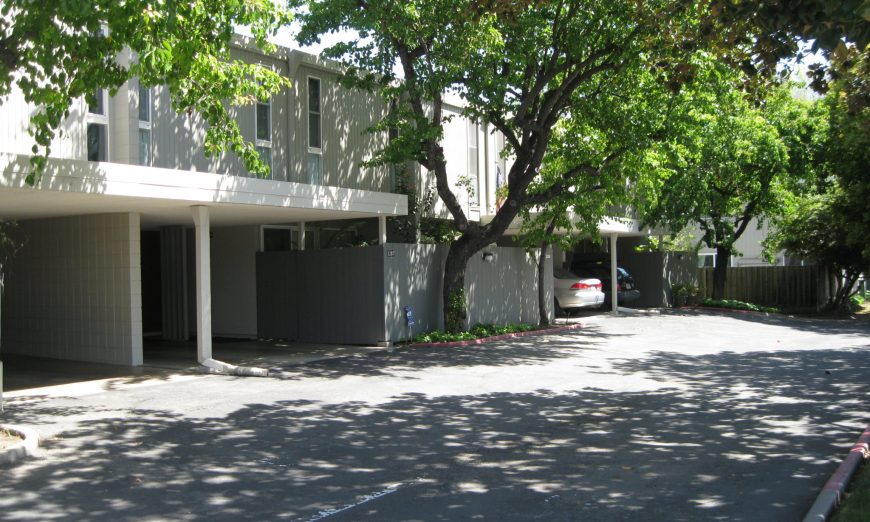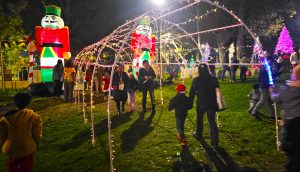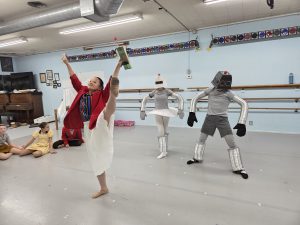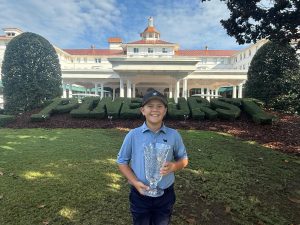Last year Pomeroy Green resident Ken Kratz submitted an application to the U.S. Dept. of the Interior to give Pomeroy Green a place on the National Register of Historic places. Over 15 years ago Palo Alto’s Greenmeadow and Green Gables tracts were the first Eichler developments to receive an historic designation.
Since then many California cities have created preservation districts in Eichler neighborhoods. Marin County has a zoning ordinance especially designed to preserve Eichlers, as does Orange County. Los Angeles has created an historic preservation zone in Balboa Highlands, LA’s single Eichler development.
Santa Clara’s next door neighbor Sunnyvale — home to Eichler’s first development in 1947 — has established seven single-story (no second story remodels) districts in Eichler tracts since 2016, covering a total of 287 homes and its planning department publishes guidelines on architecturally appropriate renovation and remodeling.
What makes these tracts historic is not just their architecture. Midcentury Modern is considered by historians to uniquely reflect mid-1950s — post-WWII and post-Depression — optimism; as well as the suburban “American Dream,” made possible on an exponentially greater scale than ever before by low interest VHA mortgages for veterans.
Deeply influenced by noted American architect Frank Lloyd Wright, from 1949 to 1966 developer Joseph Eichler built thousands of Midcentury Modern houses, bringing Wright’s aesthetic to the middle class.
In the San Francisco Bay Area, and especially in what would come to be called Silicon Valley, this architecture represented a new vision.
It was, wrote cultural historian Jason Heppler in his 2013 dissertation, Machines in the Valley: Community, Urban Change and Environmental Politics in Silicon Valley 1945-1990, “an economic and political project marrying pastoral idealism with the building of a new high tech urbanism … a high-tech metropolitan region that balanced vision of the California Dream with the high-tech suburbs.”
“The politics of growth intersected with a powerful nostalgia about the countryside,” wrote Heppler. “The engineers, scientists, academics and other knowledge professionals who congregated into the suburbs led to a convergence of ideals and attitudes about natural beauty, open space, livable and sustainable cities, and access to leisure.”
Local examples of midcentury modernism even had their own designation: Bay Area Style.
“Bay Area Style was a prominent topic of worldwide architectural discussion, publication, exhibition and debate in the 1940’s and 50’s,” wrote Historical and Landmarks Commissioner Stephen Estes in a 2010 letter to the Santa Clara Planning Commission.
The Pomeroy Eichlers are so notable that sociologist and urbanist William H. Whyte discussed them at length in his book, Cluster Housing and they were featured in Look Magazine in 1968, titled Solutions for Suburbia [1968 Look Pomeroy Green].
Midcentury Modern style is characterized by flat roofs, clean lines — for example, radiant heat that’s integrated into the floors — and architecture that opens the living space to the outside with skylights, floor-to-ceiling windows looking out on patios and atriums, and entry atriums, but with few street-facing windows.
Eichler was one of the first builders to add master baths. He was also one of the first U.S. builders to sell his houses to anyone, without discrimination (unlike, for example, Levitt & Sons).
Everything about Eichler homes had purpose: “built-ins” for streamlined kitchen work, putting the kitchen in the front of the house as the center of family life instead of relegating it to the back of the house and behind a wall.
Front patios and multi-purpose rooms visible from the kitchen let Mom watch the kids easily. The laundry room was upstairs to save people from hiking up and down stairs with laundry baskets. Strip windows maximize wall space, while double hung windows maximize ventilation.
Eichler also built community centers, pools and parks, sacrificing additional housing to create community recreation, business and retail centers that were designed as integral parts of these communities.
While the Pomeroy developments are Santa Clara’s only Eichlers, the City has another notable tract of midcentury modern houses: the Mackay homes [mackay brochure fairmede] in the Maywood neighborhood, which has seen several fights over historical value.
“The architects of these houses, Anshen and Allen, were already famous when the Maywood tracts were begun, having won multiple American Institute of Architects awards, including two for residential work built in Santa Clara,” wrote Estes. Maywood houses represented a “convergence” of mid-century architectural talent, he wrote.
“When we have a chance to preserve a neighborhood and its character, we should do that,” Council Member Patricia Mahan said at a January 2017 City Council meeting during a discussion of preservation in the Maywood tract.
As the argument about historicity continues — now in a County courtroom — midcentury modern history is indisputably alive and well today at the Kratz home in Pomeroy Green, and not only in the original furnishings that the Kratzes have maintained rather than replacing.
The ideal of the California garden is also thriving on their patio, where they harvest 50 to 60 quarts of apricot harvests every other year. “California heritage — it started here,” said Kratz.












0 comments